
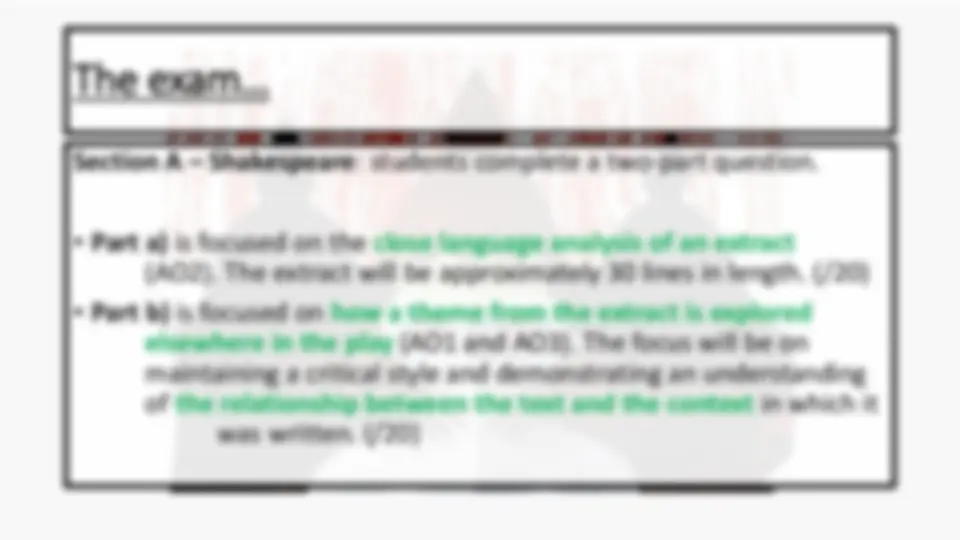
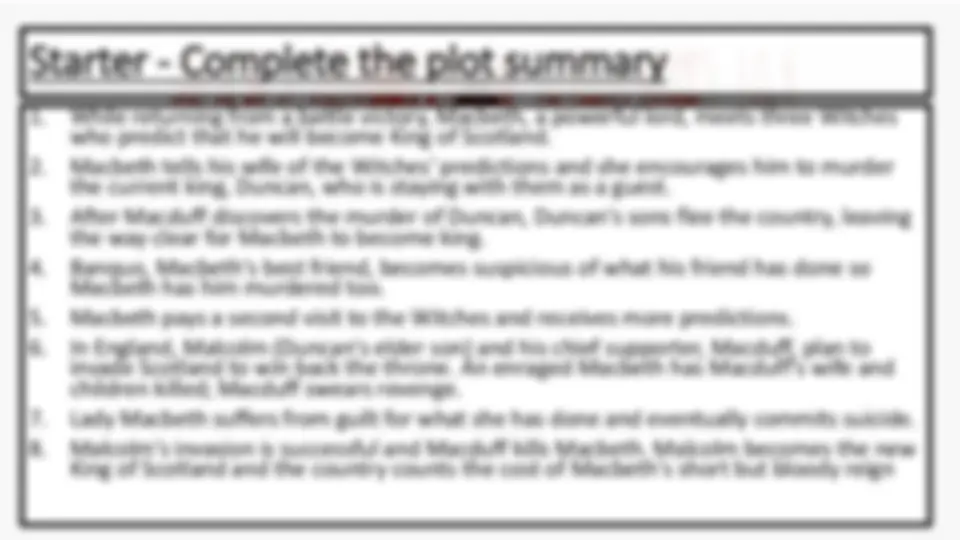
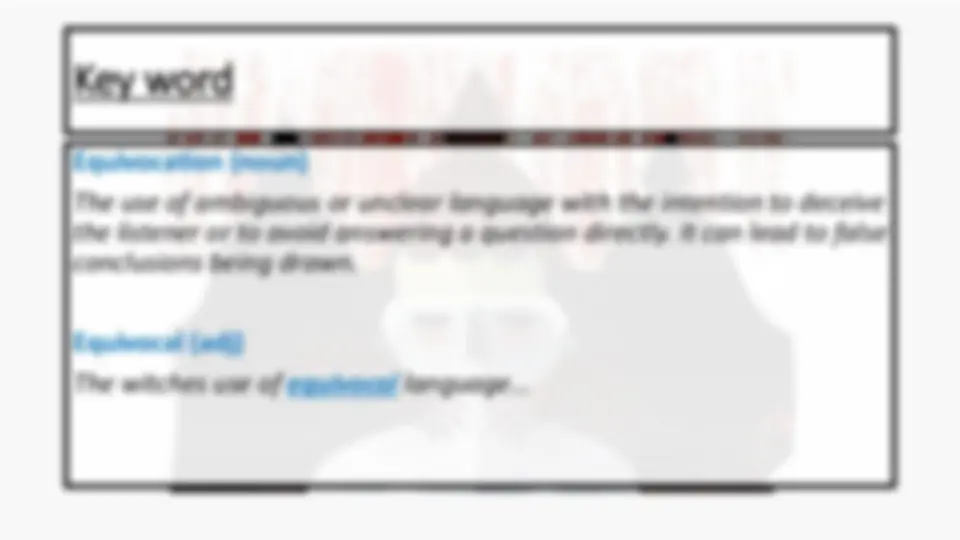
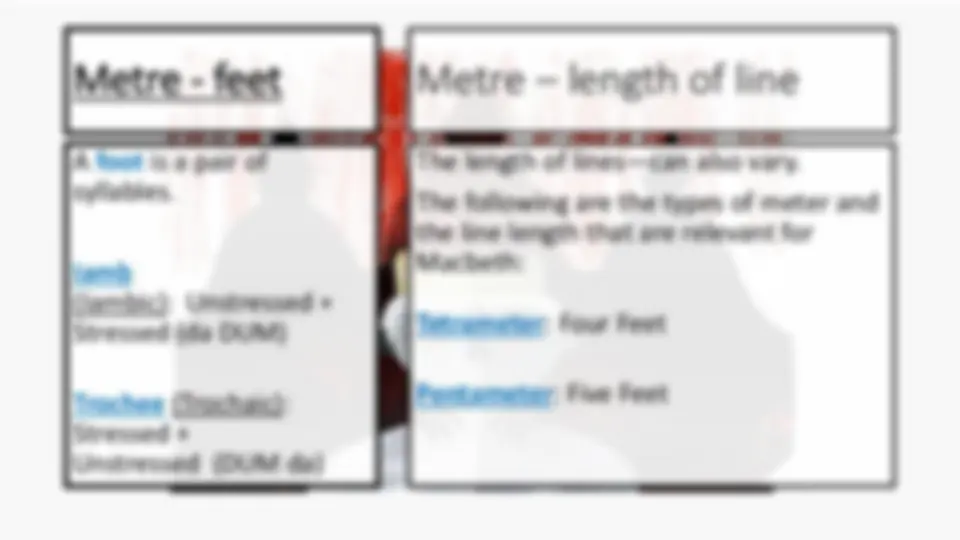
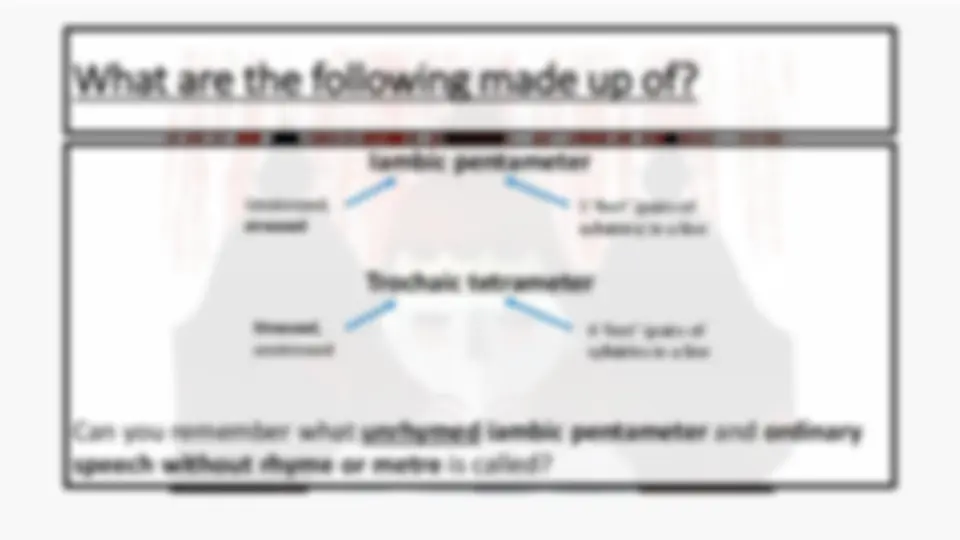
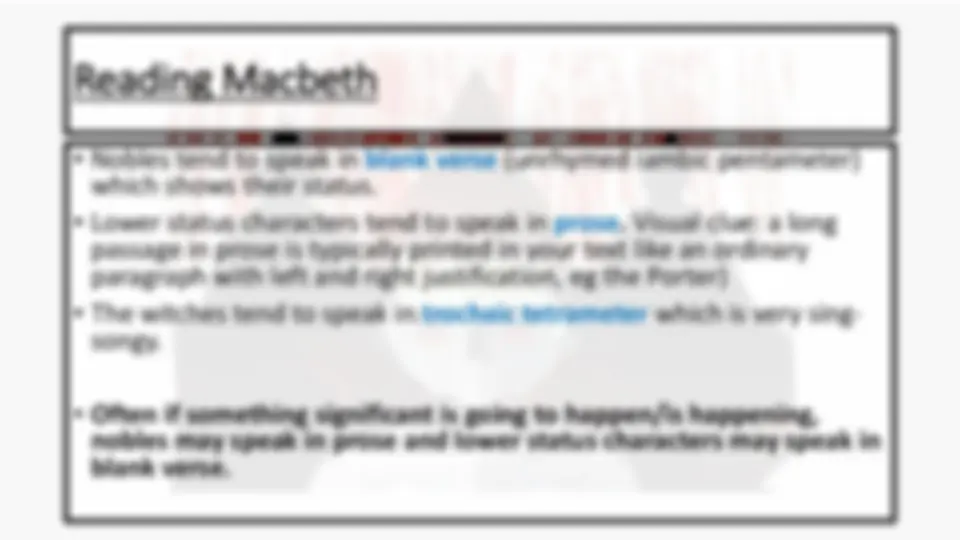
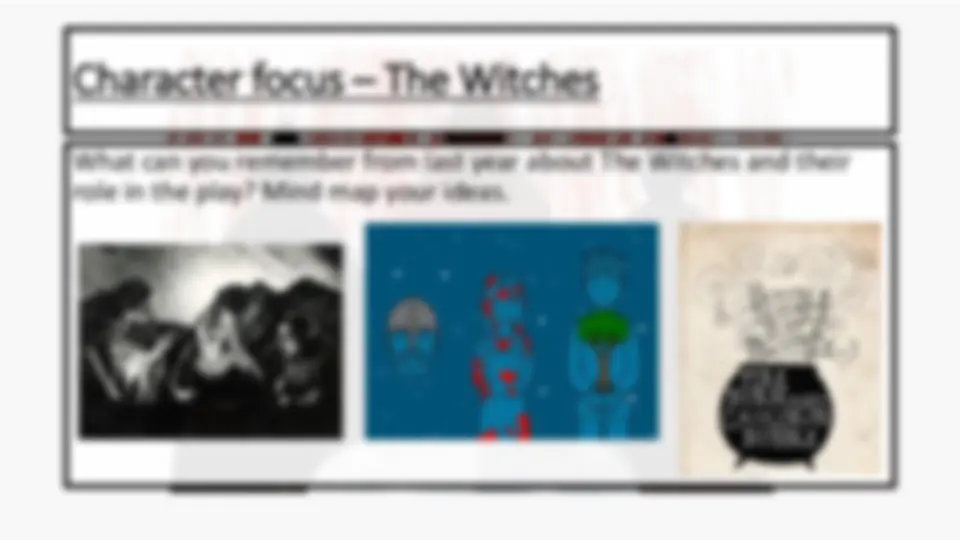
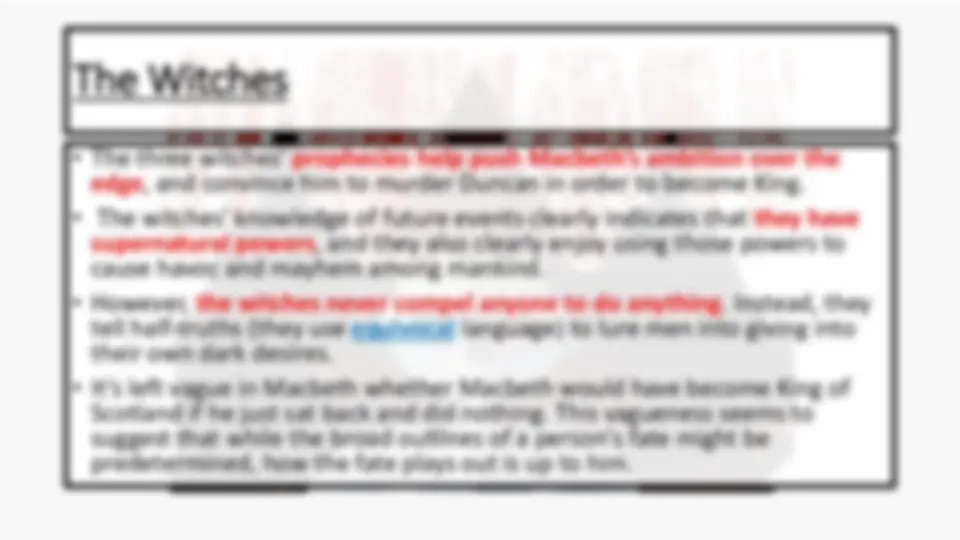
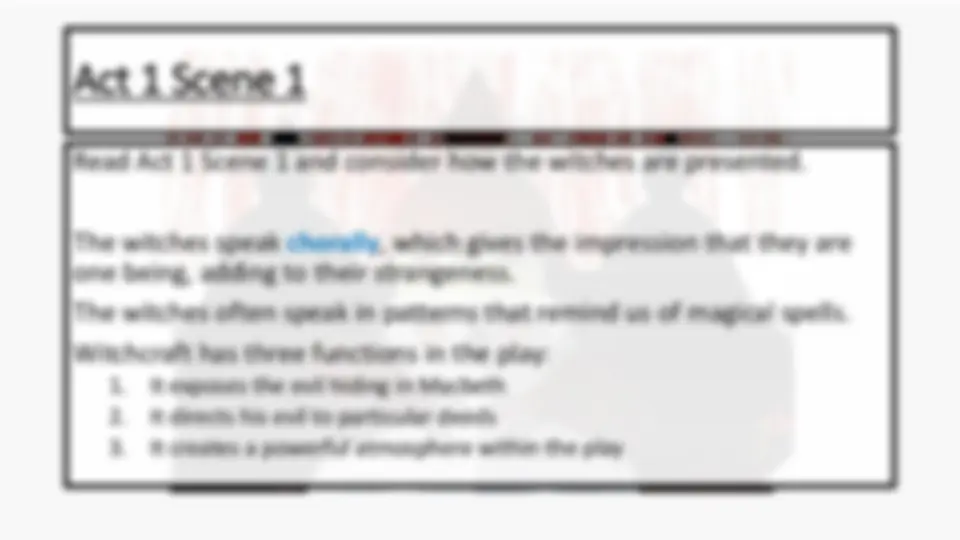
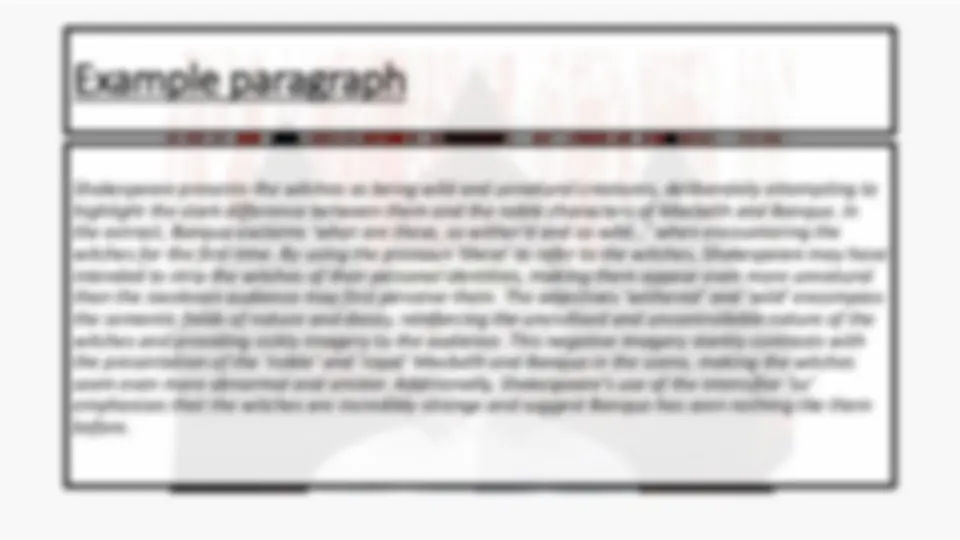
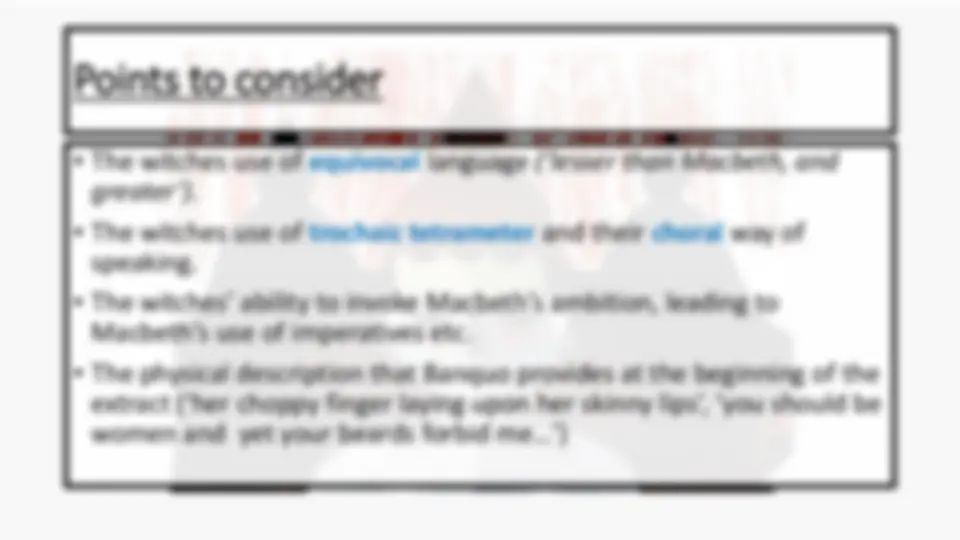
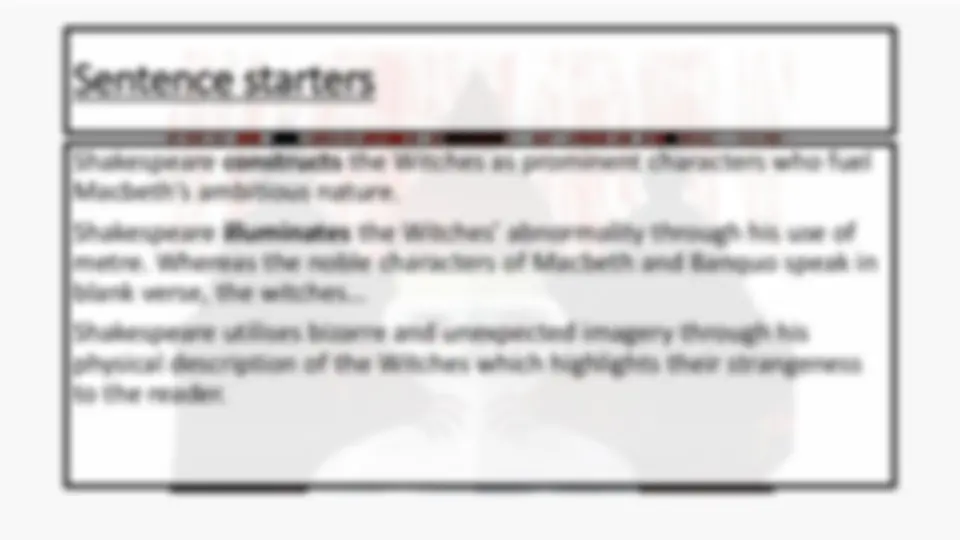
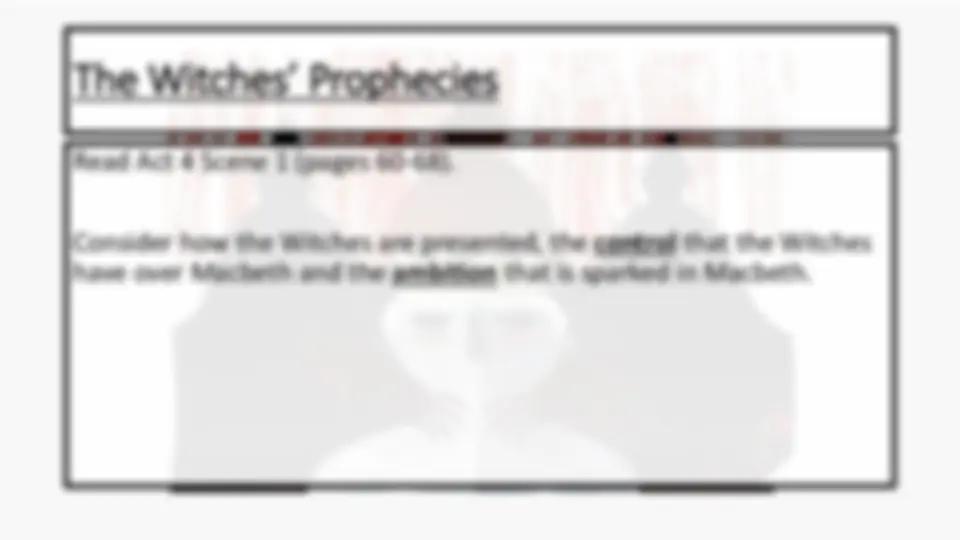
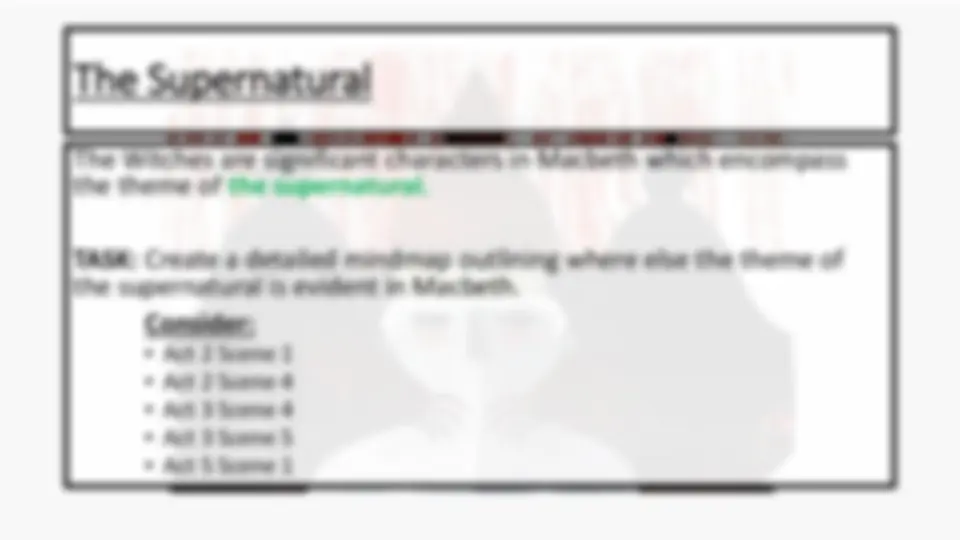


Study with the several resources on Docsity

Earn points by helping other students or get them with a premium plan


Prepare for your exams
Study with the several resources on Docsity

Earn points to download
Earn points by helping other students or get them with a premium plan
Community
Ask the community for help and clear up your study doubts
Discover the best universities in your country according to Docsity users
Free resources
Download our free guides on studying techniques, anxiety management strategies, and thesis advice from Docsity tutors
A lesson plan focused on Macbeth, with the objectives of revising metre, exploring the role of the Witches, and developing extract analysis skills. a recap of previous learning, future lessons, and information on the exam format. Key themes, characters, and quotations are provided, along with an explanation of the concept of equivocation and its significance in the play.
What you will learn
Typology: Exams
1 / 22

This page cannot be seen from the preview
Don't miss anything!















st
Learning purposes
Starter - Complete the plot summary
Key word Equivocation (noun) The use of ambiguous or unclear language with the intention to deceive the listener or to avoid answering a question directly. It can lead to false conclusions being drawn. Equivocal (adj) The witches use of equivocal language…
Recap - metre In English verse and poetry, metre is a recurring rhythmic pattern of syllables in lines of a set length. What metres can you remember from either poetry or Shakespeare last year?
Metre - feet A foot is a pair of syllables. Iamb (Iambic): Unstressed + Stressed (da DUM) Trochee (Trochaic): Stressed + Unstressed (DUM da) Metre – length of line The length of lines—can also vary. The following are the types of meter and the line length that are relevant for Macbeth: Tetrameter : Four Feet Pentameter : Five Feet
Reading Macbeth
Analysing structure ‘So foul and fair a day I have not seen’ (Act 1 Scene 3) The stresses can also highlight the key words in a line (foul, fair, day, have, seen) TASK : Using this quotation – Write a response analysing how the structure of the quotation is effective.
Character focus – The Witches What can you remember from last year about The Witches and their role in the play? Mind map your ideas.
The Witches
Extract question (pages 6-7) Explore how Shakespeare presents the witches in the extract.
Answering the extract question How does Shakespeare present the witches here? TASK 1 : Write three topic sentences in response to the question. TASK 2: Now write down a quotation to support each topic sentence. TASK: 3: Now think how this presents the witches and try to apply subject terminology. Shakespeare presents the witches as being wild and unnatural creatures, deliberately attempting to highlight the stark difference between them and the noble characters of Macbeth and Banquo. ‘what are ‘what are these, so these, so wither’dwither’d and so wildand so wild…’…’ By using the pronoun ‘these’ Shakespeare strips the witches of their identities, dehumanising them further. Additionally, the intensifier ‘so’ before ‘withered’ and ‘wild’ exaggerates how strange they are.
Points to consider
Sentence starters Shakespeare constructs the Witches as prominent characters who fuel Macbeth’s ambitious nature. Shakespeare illuminates the Witches’ abnormality through his use of metre. Whereas the noble characters of Macbeth and Banquo speak in blank verse, the witches… Shakespeare utilises bizarre and unexpected imagery through his physical description of the Witches which highlights their strangeness to the reader.